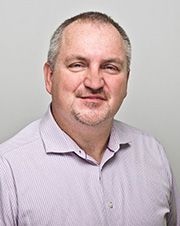Mapping pore pressure with beach balls
OR
SEG members, view the course for free!
Format: Virtual Webinar. 45 min. presentation followed by 15 min. Q&A
An optional post-lecture workshop will immediately follow each lecture for expanded Q&A and networking
Session 1, Tuesday, Feb 7, 2023, 4 pm to 5 pm Czech Time
Session 2, Wednesday, April 19, 2023, 10 am to 11 am Czech Time
SEG Members Free Access Details
Two live sessions are completed. Please scroll down to watch the videos from the recordings below. SEG members, view the course for free!
Abstract
Stress field of the Earth's crust has been studied for many decades as a part of seismology and geomechanics. Traditional stress inversion methods utilize focal mechanisms of earthquakes as this is typically the only data available at regional scale and lower crust. With earthquake mechanisms, it's possible to reconstruct principal stress directions and a ratio of principal stress magnitudes, but not the full stress tensor. However, a combination of data from reservoir injections and focal mechanisms from induced microseismicity overcomes this limitation. Various reservoir data, such as the temporal dependency of injection pressure, density logs, and in situ stress measurements, complement microseismic data and allow to reconstruct the full stress tensor: stress orientation and principal stress magnitudes. A joint-inversion technique that combines different data from various depths may also account for stress variations with depth and reconstruct vertical stress gradient tensor. Ultimately, the full stress tensor together with the focal mechanisms provide an estimate of pore pressure at the location of every event, which can be mapped in time and space. I will show how we applied joint stress inversion to a geothermal and unconventional dataset and illustrate how microseismicity can be used to map pore pressure.


Your Instructor

Leo Eisner is president of Seismik, a privately held company based in Prague, Czech Republic. The heart of his profession is geophysics and more specifically passive seismic monitoring. Leo's unique expertise in seismic research is in both ray theory as well as finite difference modeling. After completing his PhD on earthquake hazard assessment at the California Institute of Technology, Leo joined Cambridge Schlumberger Research as a senior research scientist for six years. There he worked on down-hole monitoring of micro-seismic events. In 2008, Leo joined Microseismic Inc. (MSI), where he led the Development department, focusing on surface monitoring of microseismicity, in the capacity of senior geophysicist and chief geophysicist. He joined The Czech Academy of Sciences as the Purkyne Fellow between year 2010 and 2017.
Leo’s goal is to improve understanding of induced seismicity in general, as well as to help operators to understand and improve microseismic analysis in their reservoirs. Part of this effort is an active participation in professional societies, organizing special sessions, serving as associate editor and editorial organizer of various journals. Leo is a coauthor on 49 peer-reviewed papers, 17 business journal papers, 75+ extended abstracts, and has received more than 1200 citations in reviewed journals and books. Additionally, he is an author or coauthor on 14 patents and patent applications.
